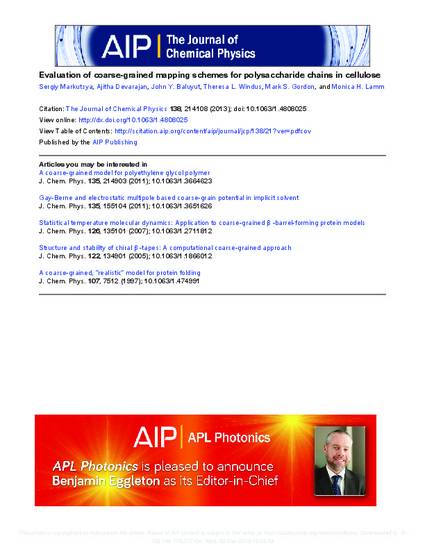
A fundamental understanding of the intermolecular forces that bind polysaccharide chains together in cellulose is crucial for designing efficient methods to overcome the recalcitrance of lignocellulosic biomass to hydrolysis. Because the characteristic time and length scales for the degradation of cellulose by enzymatic hydrolysis or chemical pretreatment span orders of magnitude, it is important to closely integrate the molecular models used at each scale so that, ultimately, one may switch seamlessly between quantum, atomistic, and coarse-grained descriptions of the system. As a step towards that goal, four multiscale coarse-grained modelsfor polysaccharide chains in a cellulose-Iα microfiber are considered. Using the force matching method, effective coarse-grained forces are derived from all-atom trajectories. Performance of the coarse-grained models is evaluated by comparing the intrachain radial distribution functionswith those obtained using the all-atom reference data. The all-atom simulation reveals a double peak in the radial distribution function for sites within each glucose residue that arises from the distinct conformations sampled by the primary alcohol group in the glucose residues. The three-site and four-site coarse-grained models have sufficient degrees of freedom to predict this double peak while the one-site and two-site models do not. This is the first time that coarse-grained models have been shown to reproduce such subtle, yet important, molecular features in a polysaccharide chain. The relative orientations between glucose residues along the polysaccharide chain are evaluated and it is found that the four-site coarse-grained model is best at reproducing the glucose-glucose conformations observed in the all-atom simulation. The success of the four-site coarse-grained model underscores the importance of decoupling the pyranose ring from the oxygen atom in the glycosidic bond when developing all-atom to coarse-grained mapping schemes for polysaccharides.
Available at: http://works.bepress.com/monica_lamm/19/

The following article appeared in Journal of Chemical Physics 138 (2013): 214108, and may be found at doi:10.1063/1.4808025.